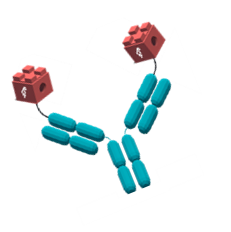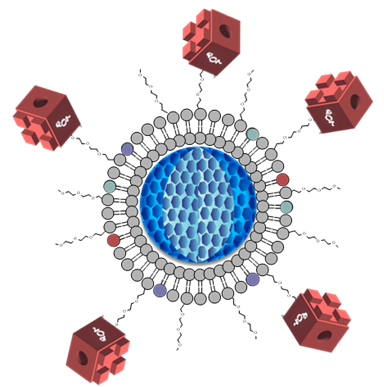A tunable 100% in vitro discovery platform
The generation of Nanofitins® consists in identifying the best ligands amongst the vast library of variants. Libraries are screened with many parameters to tune specificity on the target(s): targeting common epitopes of different antigens (such as human/mouse cross-species binding) or forcing the competition with a ligand, particularly relevant to inhibiting a ligand/receptor interaction. This process is amenable to toxic targets, or non-immunogenic epitopes. Affilogic has designed Nanofitins® against 150+ targets to date, including a wide range of circulating antigens, membrane receptors and complex entities.

So many ways to play with them… and to combine them
 Depending on the target engaged :
Depending on the target engaged :
–Nanofitins® can exert a therapeutic efficacy like neutralizing viral infections, a complement pathway, an intracellular target, several inflammatory pathways in a single multi-specific molecule or combining several cancer effectors like immune check-point inhibitors directed against tumor cells.
–Nanofitins® can be used used as vectors for targeted delivery of partners’ molecule.
–Nanofitins® can change the pharmacodynamics of a payload by enabling their intracellular delivery or extending their half-life.
Affilogic develops Nanofitins® through 4 in house programs as well as through NanoVector programs for targeted delivery of partners’ therapeutic molecules.
Click to learn more :







